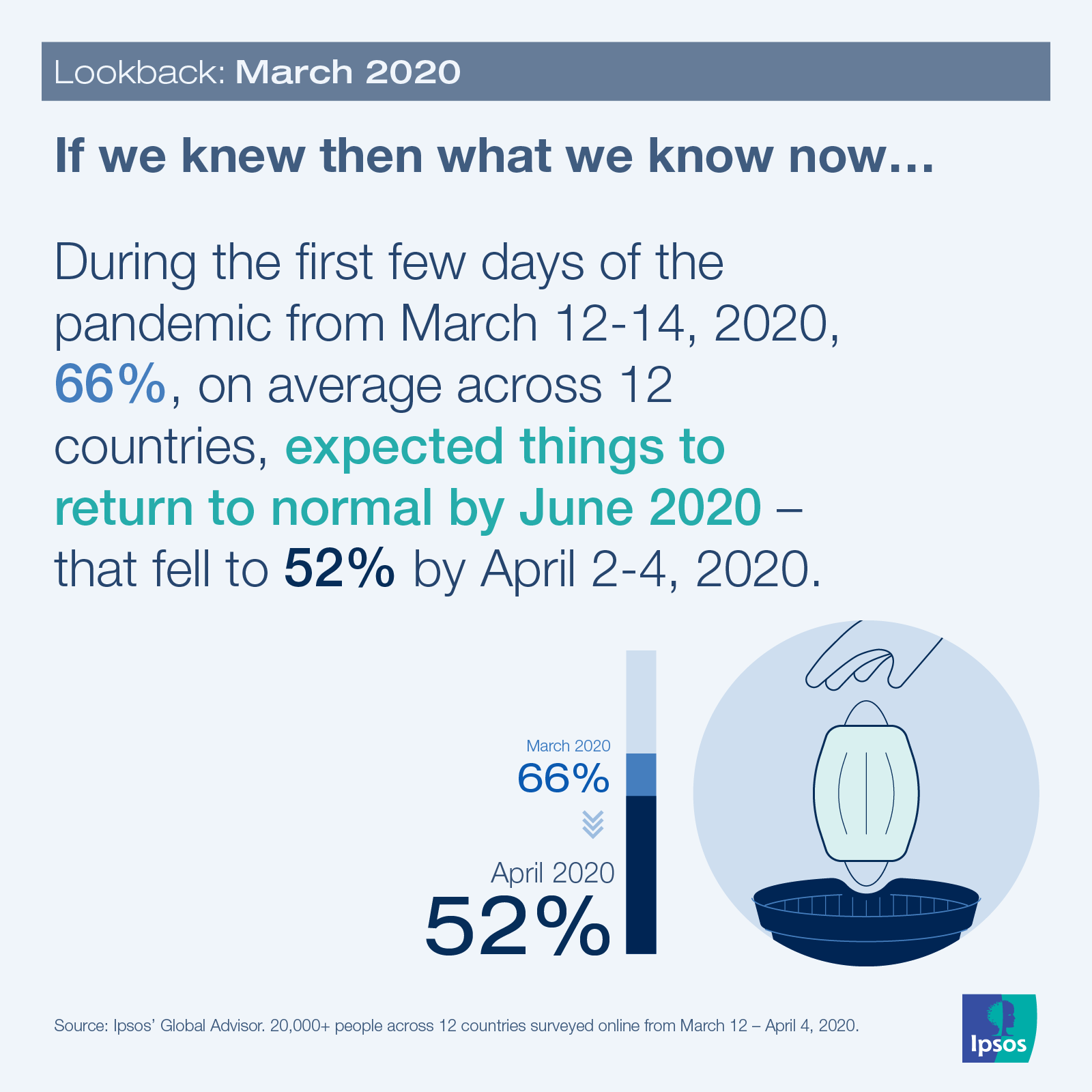

Data Dive: Looking back at how the world was feeling as the COVID-19 era dawned
The coronavirus crisis seemed small and contained at first, but like a snowball rolling down a hill it quickly grew in speed and size.
It all started with reports of hospitalizations and deaths related to a pneumonia of unknown origin in Wuhan, China, in late 2019. Soon, the alarming explosion of what came to be known as COVID-19 spurred the World Health Organization to officially declare a global pandemic on March 11, 2020.
Then, life as we all knew it came to a screeching halt.
In the days and weeks to come, citizens around the globe started doing things that only a few months prior would’ve seemed like something out of a cheesy sci-fi movie. People were wiping down and quarantining groceries, fighting over dwindling supplies of hand sanitizer and toilet paper and knocking pots and pans together nightly in honour of healthcare heroes … not to mention that video of Gal Gadot and other celebs singing “Imagine.”
Here’s a look back at some eye-opening polling via Ipsos’ Global Advisor online platform in those scary (and, yes, slightly cringey) early days of the once-in-a-century event.
- Jobs went poof
Hard lockdowns in those early days meant in-person workers, such as your local barista, hairdresser and waitress, lost the ability to earn an income pretty much overnight. It was an unnerving time. As the job losses piled up, there was a rise in the percentage of people who considered COVID-19 a threat to their job or business from February to March 2020 with medium-income earners (54% on average globally) being the most concerned when polled during the second week of the pandemic from March 19-21, 2020.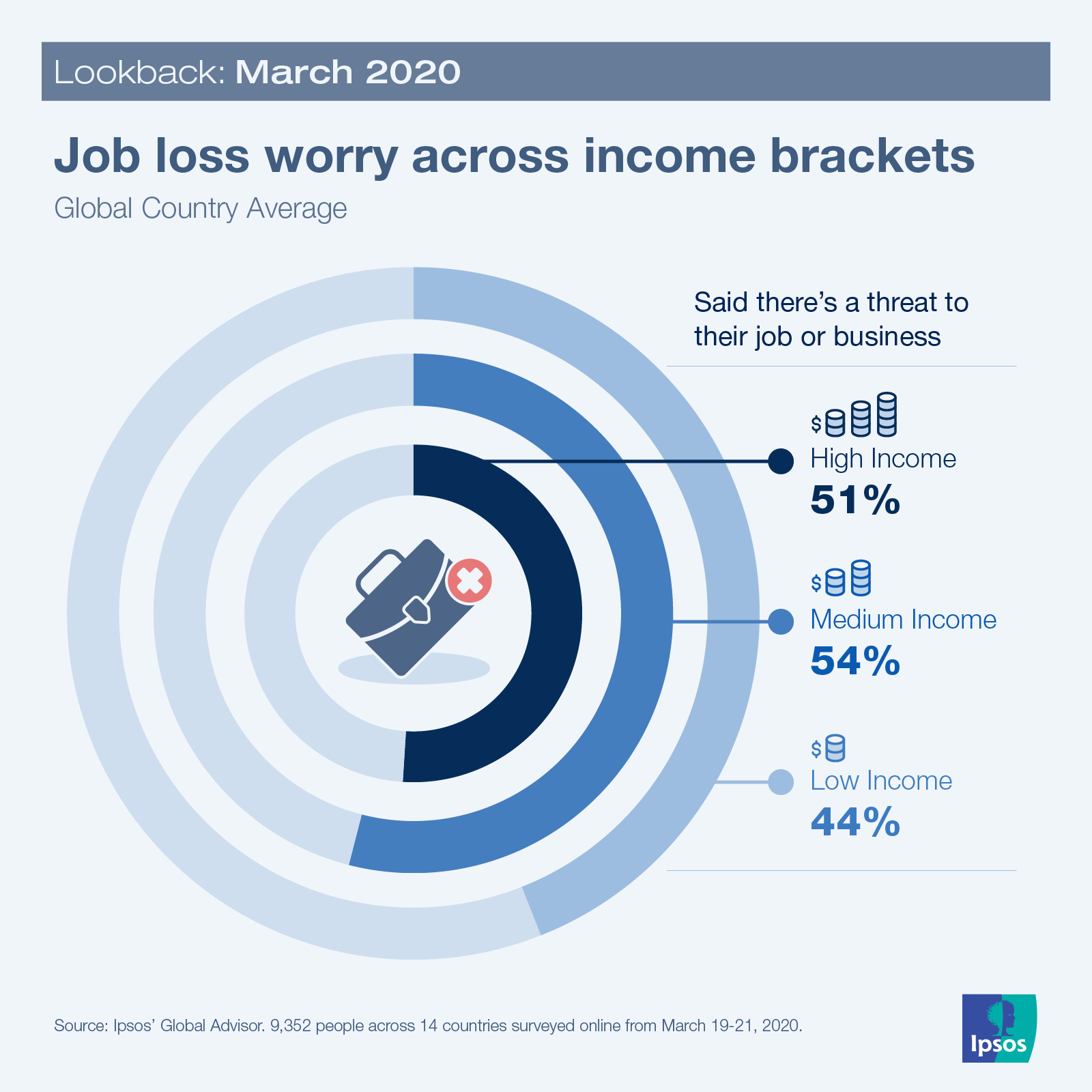
- All in this together?
While public-health experts claimed we were “all in this together” to “flatten the curve,” the truth is that almost immediately people were split into two camps. There were those who believed travel and self-isolation measures would help blunt COVID-19’s spread (46% on average across 14 countries) and those (50%) who didn’t believe the restrictions would work (the remaining 4 per cent said they didn’t know).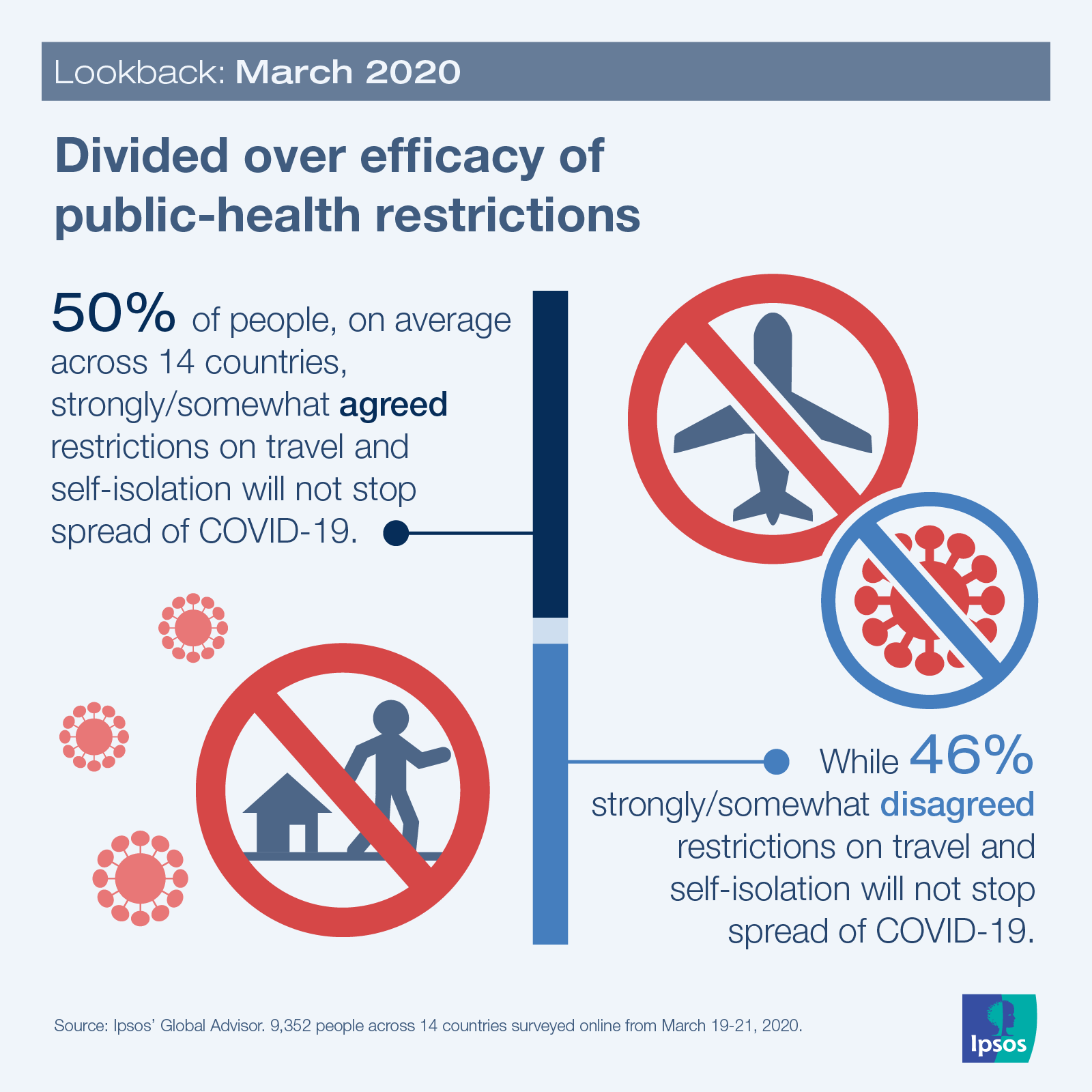
- Turned inward
As stark divisions over several public-health restrictions were already beginning to harden, there was one topic the majority increasingly agreed on – border closures.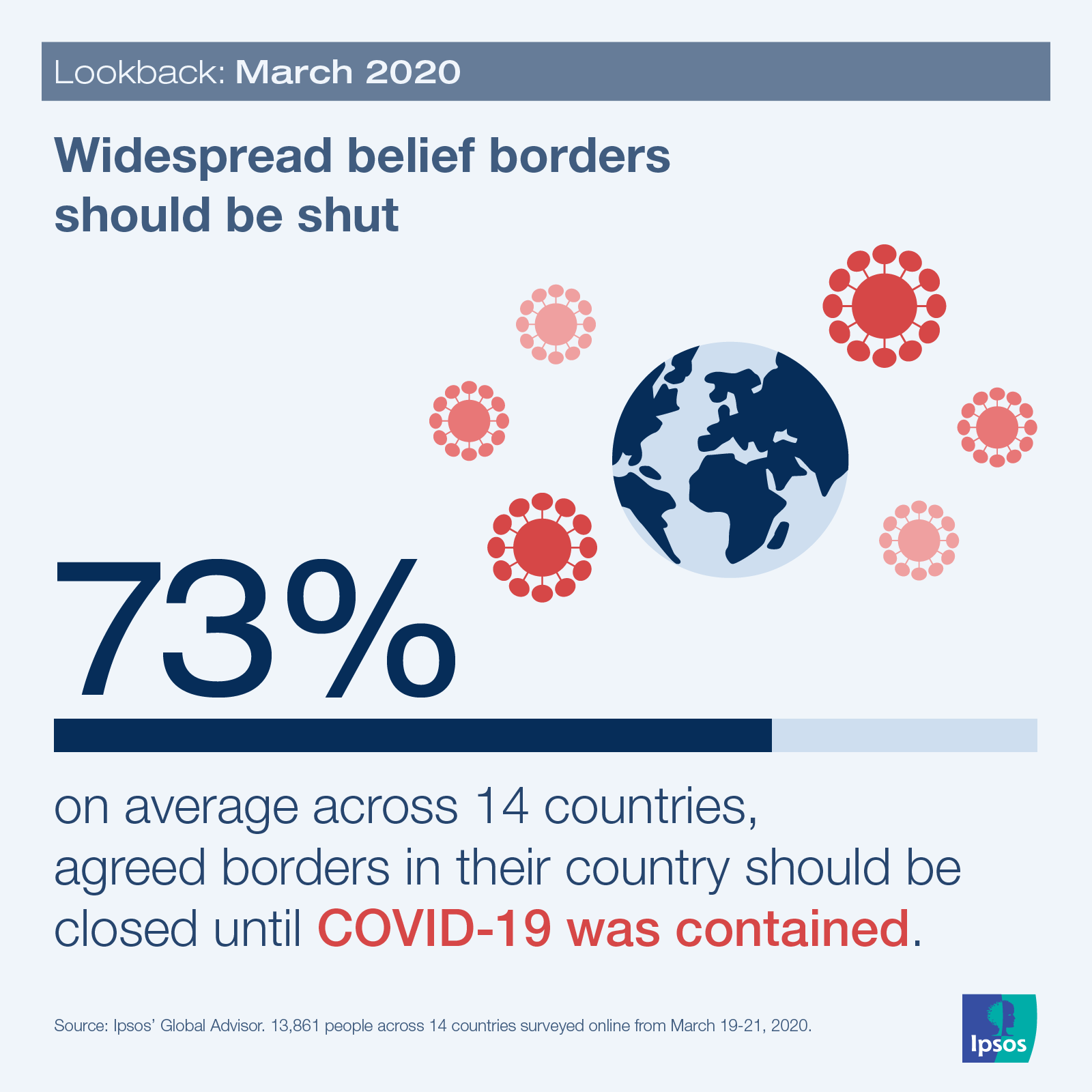
- A rising interest in sourdough
In the spring of 2020, we were mostly “staying apart together” and distracting ourselves from the dark news updates by doing everything from baking bread to shaking (or stirring) “quarantinis” to celebrating birthdays on Zoom. During that initial phase of lockdowns about half (53% on average globally) were feeling pretty optimistic that the pandemic would bring them closer to friends and family and 44% viewed stay-at-home orders as a time to learn a new skill.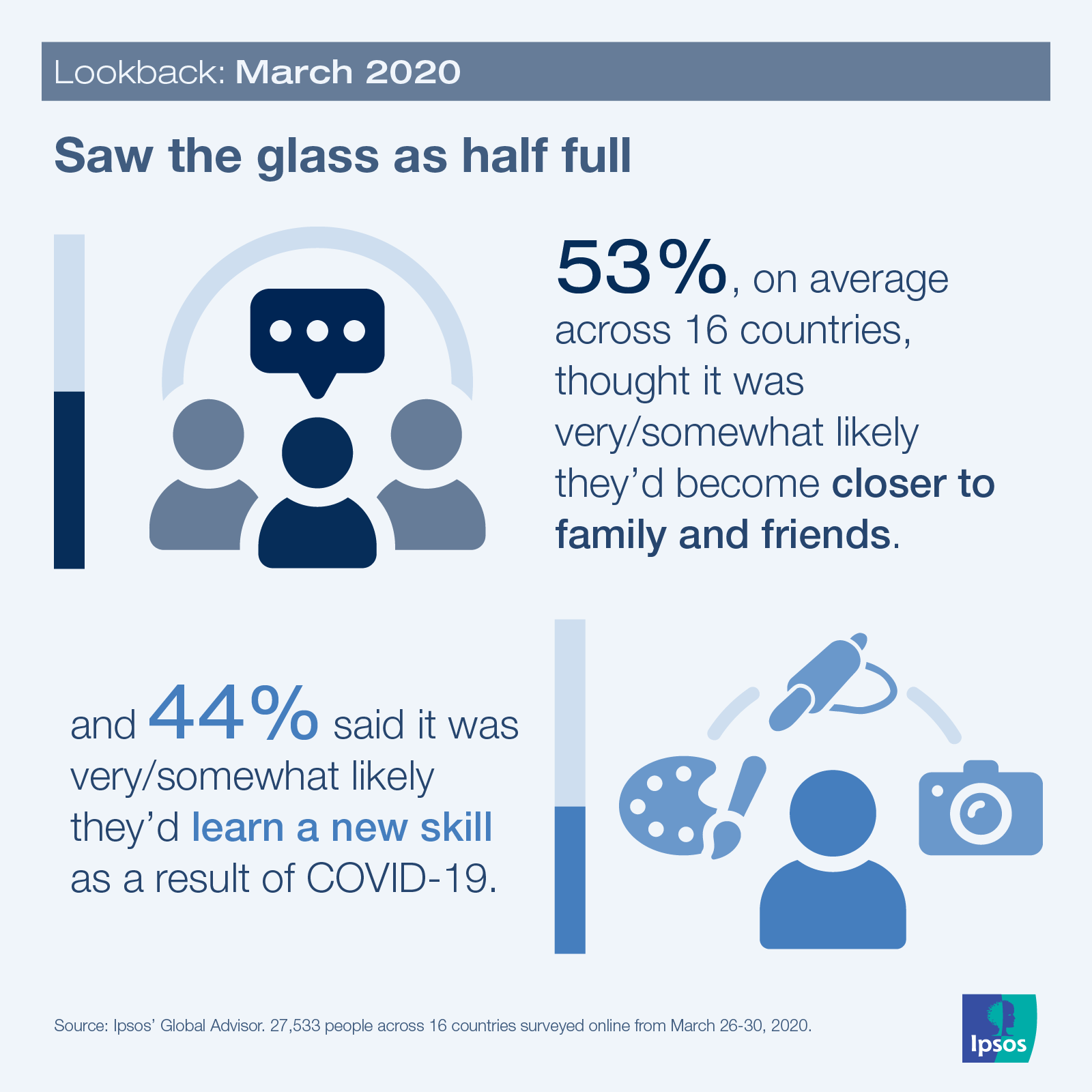
- Hindsight is 20/20
It wasn’t just all those “quarantinis” that had people feeling warm and fuzzy in the first few weeks of the pandemic. In retrospect, the optimism was likely due in part to the mistaken belief the crisis would be over pretty quickly. Many were thinking in terms of months, not years. Ipsos polling found in the days following the WHO declaring a global pandemic, 2 in 3 (66% on average across 12 countries) expected things to go back to normal by June 2020 — though that hope started to flag a fair bit (-14 percentage points) by early April 2020.